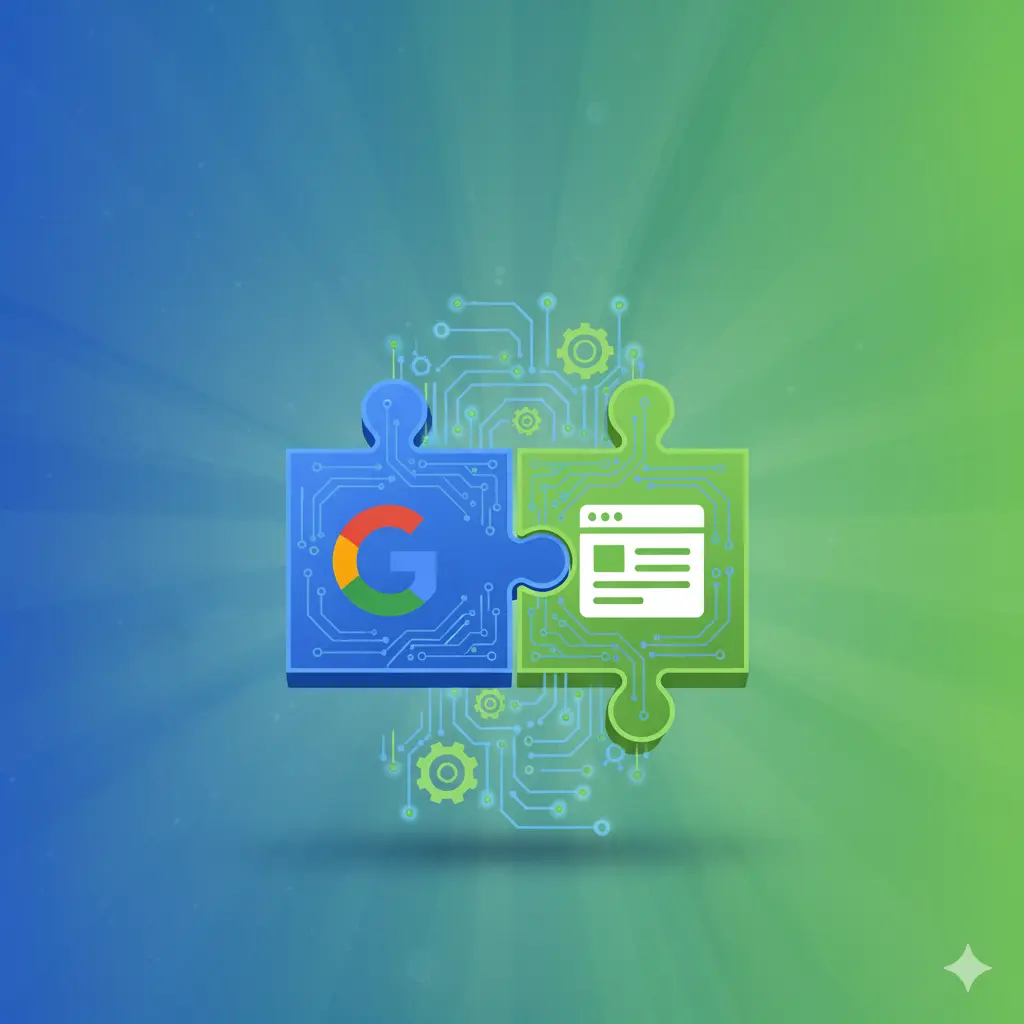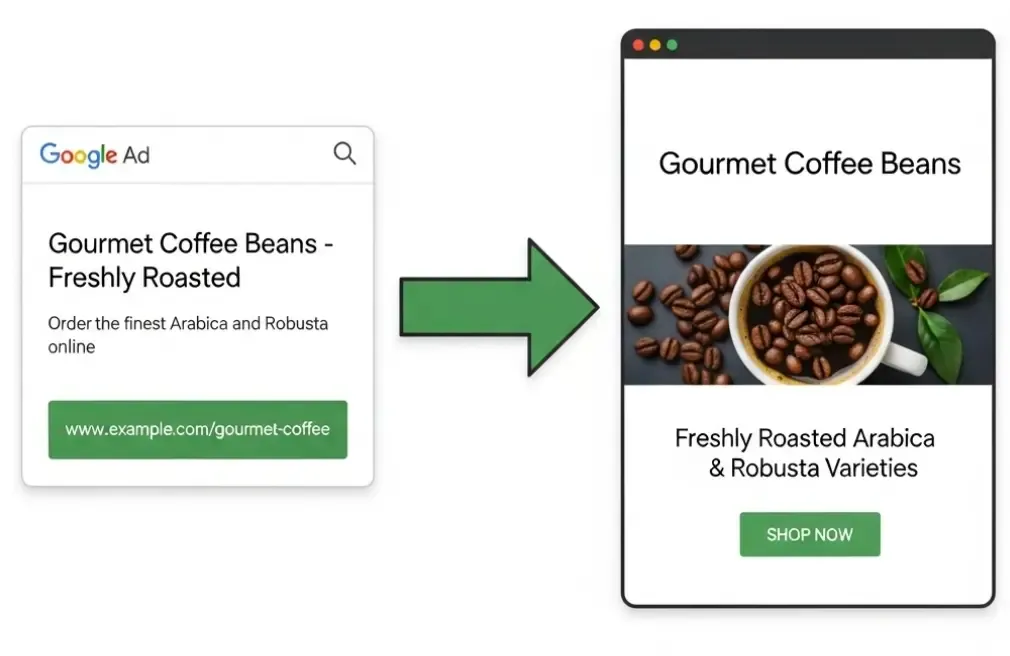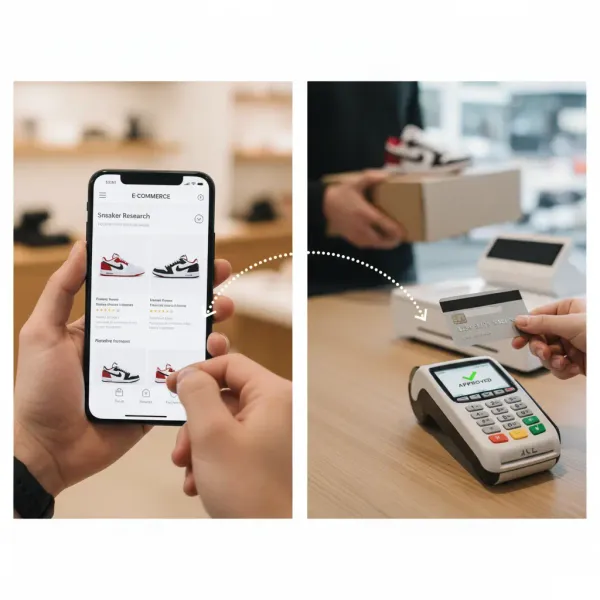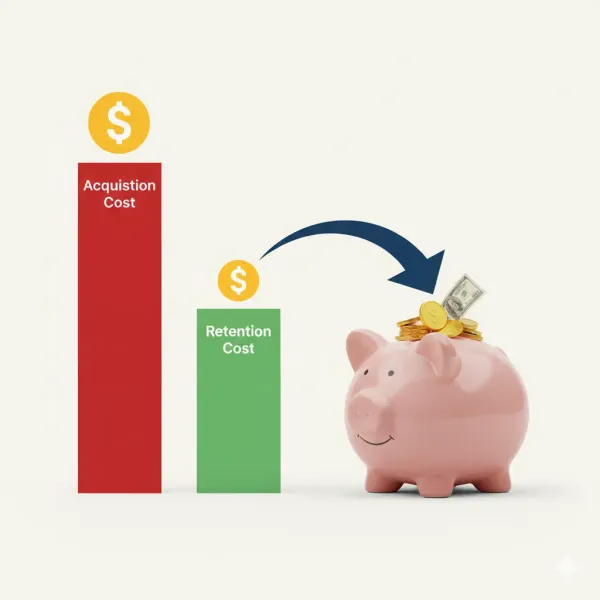The Power of Ad-to-Page Matching: Why Automation is the Future of Google Ads Strategy
Discover how a lack of 'message match' between your Google ad and your landing page can tank your conversion rate and increase your CPC. This post explores how automation is the key to scaling a perfect ad-to-page strategy, boosting your Quality Score, and achieving unprecedented performance.

You’ve invested in your Ads campaigns. Your ads are compelling, your keywords are well-researched, and you’re getting clicks. Yet, something feels off. Your conversion rate isn't where you want it to be, and your cost per click (CPC) is steadily climbing. The problem isn't the ad itself; it's the invisible wall a user hits the moment they click.
This wall is a lack of "message match"—the critical alignment between what your ad promises and what your landing page delivers. It's the moment a user clicks your ad for "men's leather boots" and lands on a generic homepage, or clicks an ad for "20% off all boots" and finds no mention of the discount on the page. In the digital marketing world, this disconnect is more than just a minor inconvenience; it's a fundamental break in the user's journey. This blog post will explore why message match is a cornerstone of a high Google Ads Quality Score, detail the manual effort required to achieve it, and reveal how automation is the key to scaling this strategy for unprecedented performance.
How Ad-to-Page Match Directly Impacts Your Quality Score
Google's Quality Score is a diagnostic tool, rated on a scale of 1-10, that serves as a proxy for the user experience you're providing. A high Quality Score can lead to better ad positions at a lower cost, while a low one can penalize your campaigns with higher CPCs and poorer ad placement.
Quality Score is calculated based on three main components:
- Expected CTR (Click-Through Rate): The likelihood your ad will be clicked. A compelling and relevant ad promises the user a specific solution, which signals to Google that your ad is relevant.
- Ad Relevance: How closely your ad copy matches the user's search query. This is a crucial early signal that you understand user intent.
- Landing Page Experience: This is the ultimate test. Google evaluates how well your landing page fulfills the promise of the ad. A page that has a high bounce rate, slow loading time, or content that doesn't match the ad's message will receive a poor score, hurting your ad performance.
When you master all three components, you create a powerful performance loop. An ad with strong relevance leads to a high CTR. That click then leads to a landing page that provides exactly what the user was looking for, improving their experience. This positive cycle signals to Google that your ad is highly relevant and useful, boosting your Quality Score and ultimately improving your campaign's efficiency and ROI.
The Problem of Scale: Why Manual Matching is Unmanageable
If the solution is as simple as matching your ad to your page, why isn't everyone doing it? The answer is simple: scale.
In a traditional setup, achieving perfect message match requires an immense, and often unmanageable, amount of manual labor. For every ad group you create, you would ideally need to:
- Conduct in-depth keyword research to find specific, long-tail phrases.
- Write unique ad copy that perfectly aligns with each keyword theme.
- Create a new, dedicated landing page with a unique URL, drafting new headline and body copy to match the ad's language and offer.
- Ensure the Calls-to-Action (CTAs) on the page are consistent and clear.
This "one-to-one" approach is a massive time sink. Most businesses simply don't have the resources to build and maintain hundreds or even thousands of unique landing pages for every ad variation. The result is a generic landing page that serves as a leaky bucket for ad spend, creating the very disconnect that tanks your Quality Score. This is the gap between knowing what to do and actually doing it.
How Automation Transforms Your Ad Strategy
This is where marketing automation becomes the game-changer. Instead of building countless individual landing pages, you can shift your strategy to a dynamic, template-based approach.
A dynamic landing page tool works by ingesting data from your advertising platform. This data—from ad copy to keyword phrases to audience information—is then used to automatically populate key elements of a high-performing landing page template.

Here’s how it works:
- A user searches for "men's leather boots."
- They click on your ad for that specific keyword.
- Your automation tool takes the ad's keyword data and instantly generates a unique landing page using a pre-built template.
- The page headline becomes "Shop Our Men's Leather Boots Collection," the hero image displays leather boots, and the body copy highlights the key features of your leather footwear line.
- This seamless, personalized user experience eliminates friction and builds immediate trust.
This strategic shift from a manual to an automated process has a profound impact:
- Unprecedented Scalability: You can now create hundreds or thousands of perfectly matched ad-to-page experiences without the manual labor.
- Blazing-Fast Speed: You can launch new campaigns and promotions in minutes, not days or weeks.
- Dramatic Performance Improvements: By consistently delivering a superior user experience, you will see your Quality Scores rise, your CPCs drop, and your conversion rates climb.
Automation shifts the focus from managing individual pages to optimizing the core template and the ad data feed. This enables a more strategic, data-driven approach to PPC campaign management that was previously out of reach for all but the largest marketing teams.
The Final Word on Efficiency and ROI
Ad-to-page matching is no longer just a best practice; it's a competitive necessity for anyone serious about improving their Google Ads performance. The good news is that the rise of automation makes this powerful strategy accessible. By leveraging a tool that connects your ad data to dynamic landing page templates, you can bridge the unseen gap in your ad funnel and unlock a new level of efficiency and ROI.


